On-farm Meat Processing
Processing Meats on Farm
Mobile Slaughter Yesterday,
Today and Tomorrow?
by Lynn Miller
“Yesterday, all my troubles seemed so far away…”
It was 1971 in Drain, Oregon, and I managed a small cattle and sheep ranch for some investors. Part of my wage was a steer to raise for personal use or sale. There were only two of us in the family at the time and I knew we wouldn’t consume a whole beef in a timely manner so I made arrangements to sell half to someone with the understanding that the cut and wrapped packages would have to carry a NOT FOR HUMAN CONSUMPTION stamp on the wrapping paper.
I had seen the truck running around locally with a sign on the side which said CUSTOM MEAT CUTTER and a phone number so I called. It was a small family-owned business thirty miles away. They told me straight away that their facility wasn’t federally inspected. I didn’t care. (In my rustic, hardscrabble, farm and ranch community, federal inspection was a joke – an extra fee you paid to get a stamp of approval with no one really inspecting anything.)
As a service to small ranches and farms, for a nominal fee, this custom cutter would send out their truck, a 1952 Ford 2-ton with a plywood box on the back featuring a steel trolley-track which extended out three feet back of the big rear door. If I made arrangements to have the steer close at hand, the driver would dispatch it and prepare it for a return trip to their cooler, where it would hang for 10 to 14 days before being cut and wrapped. They requested that there be a water hose nearby during slaughter.
So I made the arrangements like many others before me. Pretty sure of what was to follow. There weren’t any surprises. The driver got out of the truck, made small talk, checked the site and the water availability and removed a 22-gauge rifle from the cab. One perfectly placed shot and the steer dropped dead. Quickly the driver became butcher; making a clean incision at the jugular vein to bleed out the animal. He backed the truck up and rigged a butcher’s stretcher bar between the hocks. He then pulled a trolley out along the track and threaded a cable from his winch hooking the end into the stretcher bar center ring. Slowly the dead steer was yarded upside down until it hung free. Then came the hands-on process of eviscerating, skinning and halving the carcass.
The two halves were winched into the truck box and wrapped in plastic sheets with tags stapled to them. The driver offered to take the hide, head and vital organs if they weren’t desired. Everything was hosed off and the driver left to go back to the butcher shop and cooler.
On another occasion, I hauled a 250 lb pig 50 miles into a custom cutter’s facility near Elmira, Oregon where everything was done for me including smoking and curing hams and bacon with a maple recipe that was outrageously good. No inspection and the packages stamped accordingly.
These services are still legal in many parts of the country. And, depending on how remote and “rural” an area is, it is completely acceptable. But with the growth in ‘certified organic’ local foods and the swelling of food poisoning scares, if a famer is to avail him or herself of the strong new market demand for direct meat sales every effort must be made to go well beyond simple compliance with state and federal regulations.
For me in my yesterdays, the scenario above repeated many times over, constitutes my earned understanding of ‘mobile slaughtering’. That’s why this new buzz around these words, as if this was something absolutely unique and brand new, seems a bit odd. Odd, that is, until I started to do some research.
Today is just a worry away…
Today, restaurants, local shops, and individuals are demanding local, fresh, clean meat products from farmers they might actually know. That demand now figures into the millions. In some cases they are even demanding organic certification. That translates to state and federally inspected facilities, process and product. The new application of the term mobile slaughtering presupposes that we are talking about a facility and process that is federally inspected and approved, that cancels out those old guys with their plywood boxes mounted crudely to the back of a flatbed truck. Enter the shiny, stainless steel, fully heated, cooled and plumbed mobil antiseptic processing plant. Not a bad thing IF it honors those and that which it would serve. But if such a big shiny farm invader inserts itelf into the independent small farmer’s world with the sort of industrial insistence some dairy co-ops have come to represent, it could quickly become a nightmare.
But shouldn’t we back up a notch and ask why bother? We must bother because, as it has been said many times and many ways, this is one of those places where opportunity and need meet but without a suitable bridge. Let’s not make it into a toll bridge with a customs office at the end. Beware those who smell a very big profit with this need.
The demand for fresh, local meat products – with no taint of industrial process – is absolutely staggering. And there seems no end to the growth of that demand – ergo opportunity. On the other side we have a comensurate growth in the number of new small farms answering the call for these products. But the farm, typically, is not set up to realize the value-added processing that takes the chicken, duck, catfish, turkey, steer, lamb or hog through to a cut and wrapped article. And the industrial options aren’t options. So we have a situation where it is clear that answering the processing need in a scale and cost appropriate way will not only add to farm profitability but, perhaps more importantly, will allow for, and encourage, the growth in small farm numbers to expand exponentially. Far-sighted farmers and farm organizations saw this and have been working over the last eight years to theoretically answer the need with research, development, prototype and infrastructure (though too little of that essential element). So we now have some working examples to consider.
On Lopez Island, west and north of Seattle, the first of these fully approved mobile slaughter units was put into operation in 2002 with a USDA nod and federal inspector on board. Since that time the USDA has certified eight others for large animals across the country. (Separately, a handful of specialized units geared towards poultry are cropping up in various configurations across the country.) While these are very few in number they do now represent some working history that would seem to point in interesting directions. All of the units which have been in full operation report tremendous local farm community acceptance and process success with every indication of growth in numbers. Those are internal conclusions. Externally we are beginning to see the making of an almost predictable backlash against the model(s). There are the opening squeaks of a propaganda campaign to paint mobile slaughter units as engines of contamination. This in spite of the fact that great pains have been taken to design these various prototypes to satisfy all state and federal sanitation regulations AND include on-board USDA inspectors assuring, in some cases, that the meats also measure up to organic certification standards as well.
The concept of the mobile slaughtering unit is gaining traction and all around the country news articles are popping up. Perhaps this is why we are seeing folks prompted to make criticisms that come more from speculation than knowledge. One of those frequently stated in New England is that the concept has a serious flaw because it does not take into reality the pressing need for suitable matching cold storage and flash freezing capabilities.
There are a variety of theories around how long meat should “cool” in the carcass before it is cut, wrapped and frozen. And there is great mystery and argument around what constitutes true ”fresh” (- i.e. if it has ever been frozen, how can you possible call it fresh?). But customarily a large animal carcass should cool from 8 days to two weeks. So what we see here is a bit of a disconnect. All of these prototype units presuppose delivery of a slaughtered carcass to a centralized cooling facility. It should be obvious that a mobile unit of anywhere from 35 to 55 feet long would quickly lack space to handle cold storage for any appreciable number of carcasses. And these units, in order to be fully useful and profitable need to move on the very next day to another farm.
Perhaps the most legitimate concern for these units would come from established small local meat processors who depend on the local independent farmers as their clientele. They are justifiably worried about losing business. These facilities might do well to think creatively about how they could collaborate with mobile units allowing for joint ventures in cooling and cutting. Or to add the mobile slaughtering service to their established operations.
But, of course such observations are in themselves shortsighted because of the truth of the broader landscape; the News Observer, in a July 2010 story by Andrea Weigl, told about a succesful and ingenious North Carolinian, Lee Menius, being awarded an $8,000 private grant with which he built a mobile poultry slaughterhouse on a trailer he pulls behind his pickup. He rents the unit to other farmers after finishing his own birds.
(Weigl further reports that in North Carolina a farmer must register with the state to be a meat handler. In 2002 there was one such registration, today there are 366. A very clear sign of changing times and needs.)
But to further complicate the question; there are certain farmer’s markets around the country which will not allow, for liability concerns, that patrons sell meats which have been processed ‘on-farm’. That would then point back to the more expansive and expensive fully inspected tractor trailer-type stainless steel units, and again back to the issue of storage and secondary processing facilities.
The Glynwood model: In May of 2010, Glynwood, a non-profit organization in the Hudson river valley of NY have come up with a modular mobile slaughterhouse concept (see Glynwood sidebar). They have trademarked it as the ‘Modular Harvest System” and speak of it as a next generation approach to the humane slaughter of livestock. It is designed to employ ‘docking’ stations. This appears to be a system as much as a facility and as such is remarkably more ambitious than the other prototypes spread over the country.
By comparison that first Lopez Island, Washington, model would seem highly and easily replicable. Bruce Dunlop, a founding member of the project was showcased in an on-line article by Ken Simon entitled “Is a Mobile Slaughterhouse Coming to Connecticut” (http://www.workingtheland.com/feature-mobile-slaughterhouse.htm) speaking to New England farmers. Quoting from that article; “Dunlop pointed out that the Lopez facility cost about $200,000… It can theoretically process up to 30 head of cattle a day, although it typically handles more like six to 12 head on each farm it visits….the USDA now looks at the project as an unqualified success… Last year, its third in operation, Dunlop’s co-op processed 500 head of beef and 500 lamb and hogs, comprising about 250,000 pounds of meat… The 55 co-op members… are taking in $850,000 in annual retail sales, more than double their first year… The cooperative, which services member producers within a 100 mile radius of the cutting plant, takes in $250,000 in fees from members which supports $225,000 in annual payroll costs for six year-round employees…”
This unit is built on an unmarked 33-foot trailer lined in stainless steel with heat, cooling and potable water. It can hold 10 beef cattle, 20 hogs or 70 sheep. An on-site USDA inspector checks each live animal prior to harvest and then again after processing. The meat is transported to the co-op’s USDA regulated cutting plant where it is later cut into retail portions, packaged and cold stored until pickup.
practical realities
Mobile slaughtering units may cost anywhere from 150 to 250,000 dollars and might have a variety of special applications. For example a unit in Kentucky moves between three locations processing poultry, shrimp, bass, catfish and other fish. That unit is supervised by Kentucky State University.
In Washington state, the Pierce County Conservation District put up $300,000 to cover the cost of building a mobile unit, stating that they believe such units will help to preserve local farmland in six contiguous counties.
One year ago, smelling a new alternative ag sector they might want to develop, the world’s largest natural-foods supermarket chain,Whole Foods, announced their intention to step into the mobile slaughterhouse arena with a fleet of state of the art USDA approved mobile units. Their operation model would be guided by their own process and profitability criteria. For example, client farmers would have minimum “buy” of 500 chickens with those who agree to sell to Whole Foods having unlimited access to the units. We are told that WF would impose a strict set of guidelines requiring participating small farmers to raise only a specific breed of chicken supplied by an identified breeder, and those birds to be fed a certain brand of feed. Other required guidelines would be imposed as well. All of this smacks to this writer of the vertical integration tactics which gave us industrialized agriculture in the first place. Having large retailers enter the arena of the mobile slaughterhouses points away from the decentralized small scale farming that is most needed. Further, it could be argued that the tactics will evolve to even more “get big or get out” pressure.
As the discussions and interconnectivity of this livestock activity continue it might be helpful to draw clear distinctions between small independent processors and the larger corporate entities.
tomorrow seems so close…
Regardless of scale, some have argued that rather than put time, research, and money into this mobile concept, why aren’t we moving to encourage a return to the mid-sized independent stationary facilities? In Weigl’s New Observer story she speaks of a 5,000 square foot poultry facility built three years ago in Siler City, NC. at a cost of $850,000. The Chaudhry Halal Meats plant has yet to break even. They are now slaughtering 1,000 birds a week at a charge of $4.50 per finished product. With such economic indicators it might be difficult to interest investors around the country. But if such stationary facilities, especially those geared to larger animals, were providing services (i.e. cold storage and cutting) which mobile units could avail themselves of, the numbers might jump favorably.
Some within agriculture see the concept of mobile slaughterhouses as a misguided quick fix to a problem that will eventually right itself through a supply and demand sieve. I disagree. Though there are many mechanics to work out, the basic concept of hundreds, if not thousands, of independent mobile units is sound and it has the applicability it takes to work most everywhere on the continent.
What is needed now is for non-profit and cooperative efforts to work with determination to develop a sort of specialized ‘brokerage and information referral’ for mobile slaughter. This would give farmers, meat cutters, and related endeavors a place or places to go for assistance in implementation, funding, and red tape wrangling.
Lynn Miller is editor/publisher of Small Farmer’s Journal and vice president and co-founder of the non-profit Small Farms Conservancy.



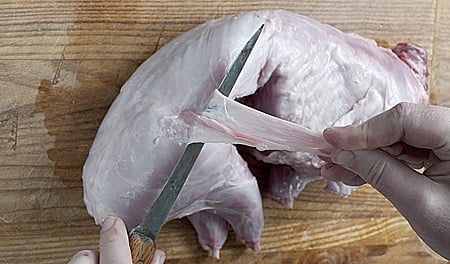
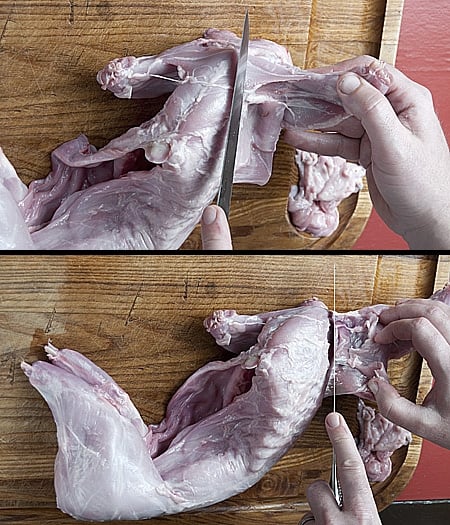

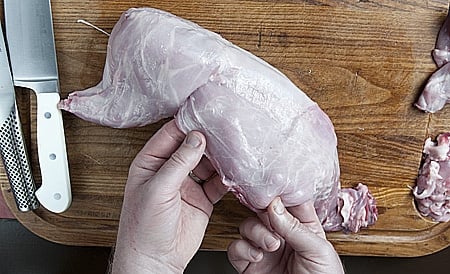
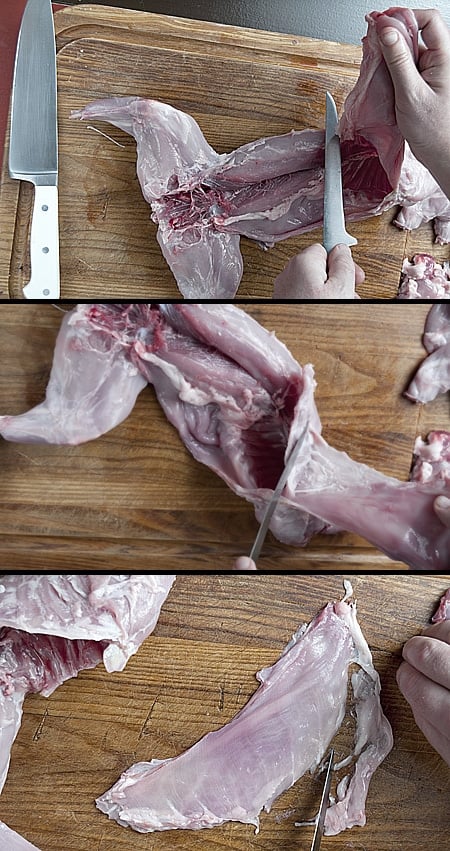
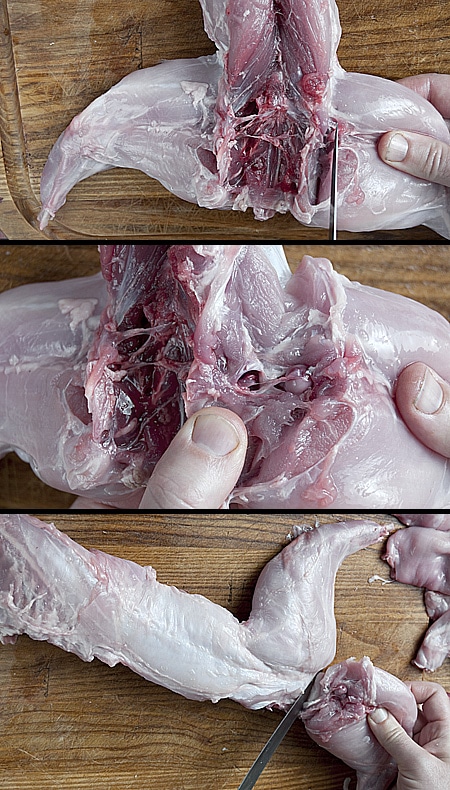
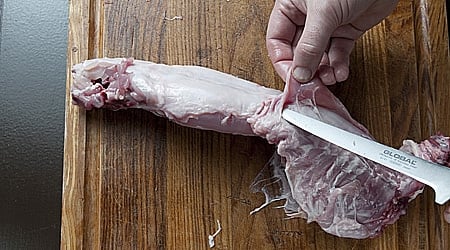


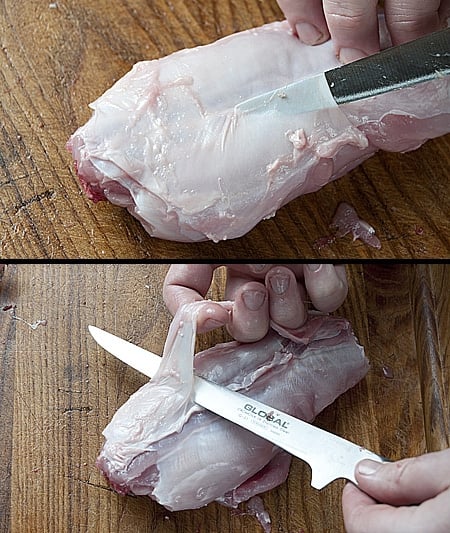
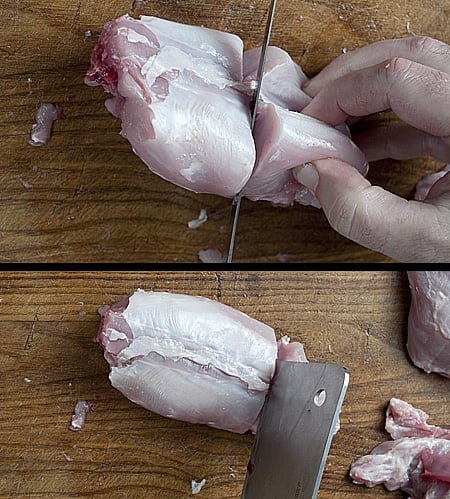
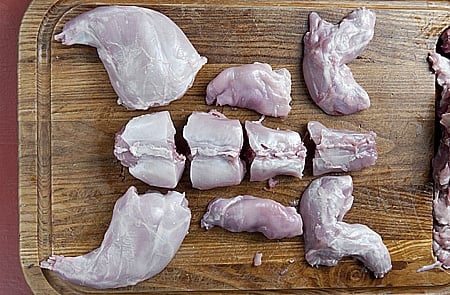
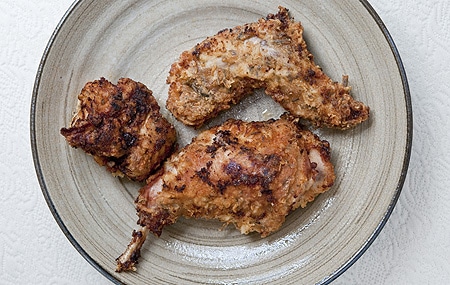
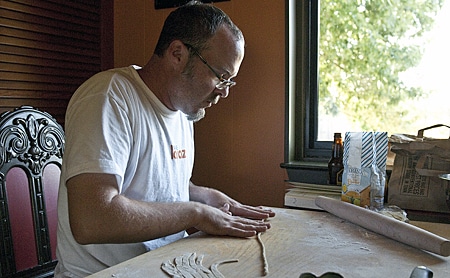
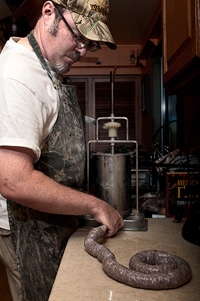
 Industrial agriculture is fighting for its scientific, political and economic life. The public drum beat for a new farming is growing louder every day. The citizenry want safe, healthy food – they want the security and the civilizing regional diversities which come of a vibrant local food scene – they want the independent family farms to succeed and thrive – they want to see small rural communities come alive again for all the right reasons.
Industrial agriculture is fighting for its scientific, political and economic life. The public drum beat for a new farming is growing louder every day. The citizenry want safe, healthy food – they want the security and the civilizing regional diversities which come of a vibrant local food scene – they want the independent family farms to succeed and thrive – they want to see small rural communities come alive again for all the right reasons.

